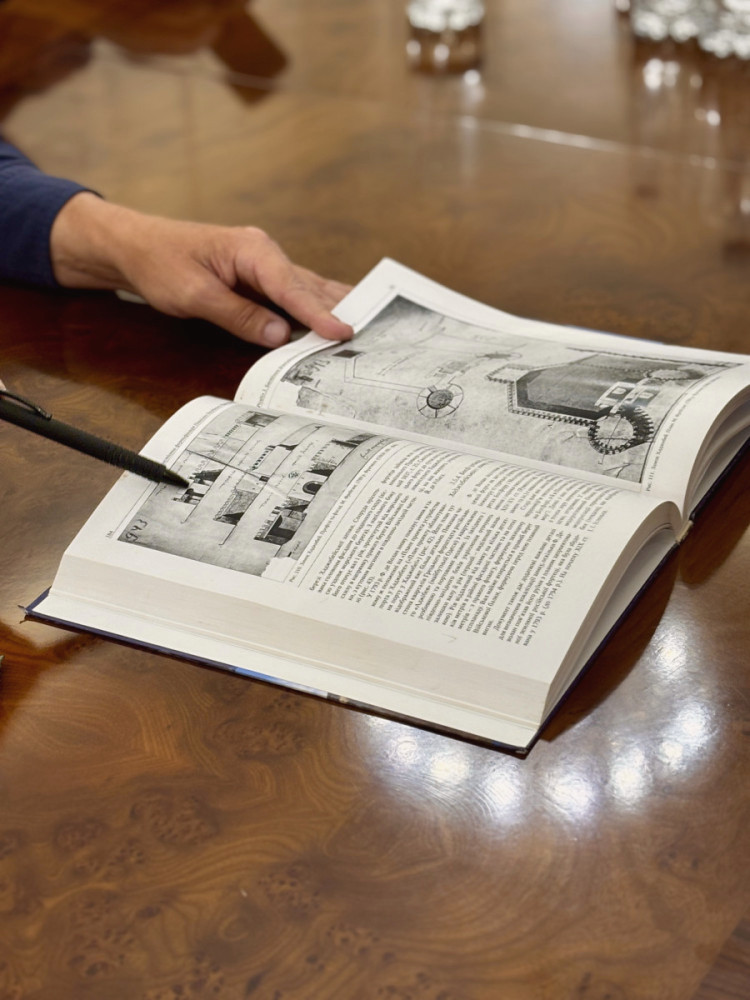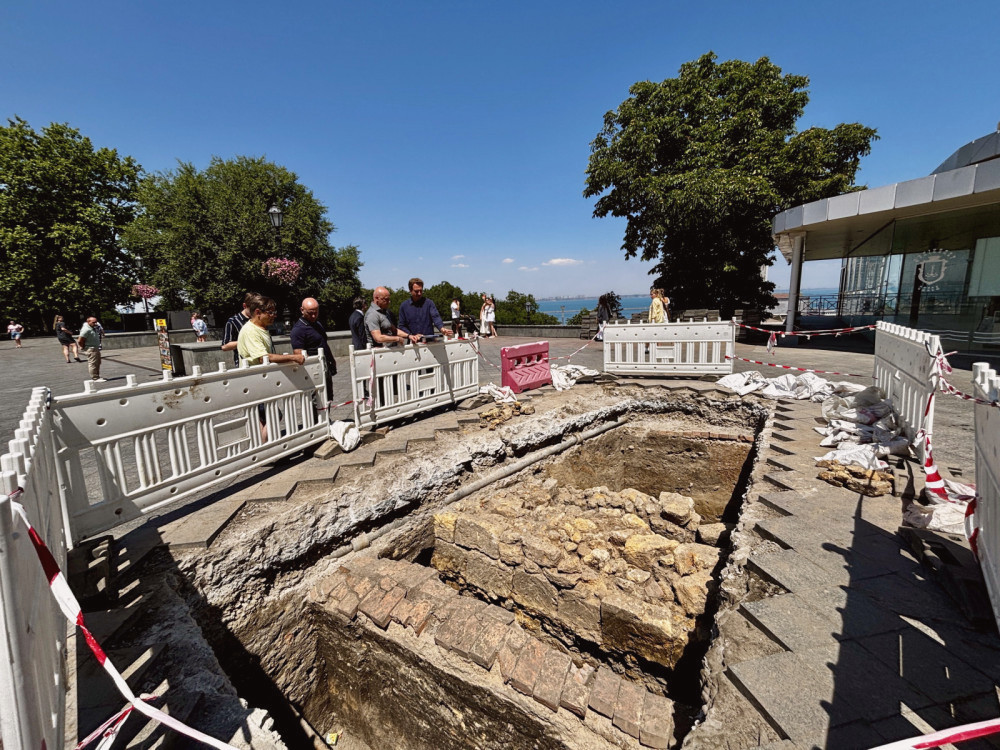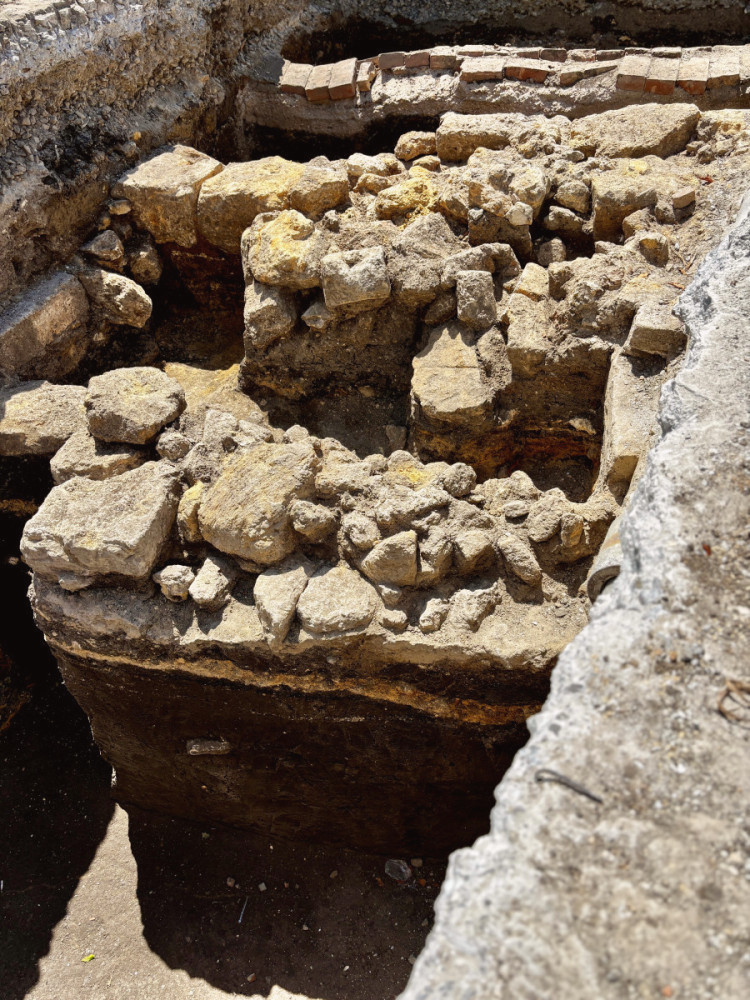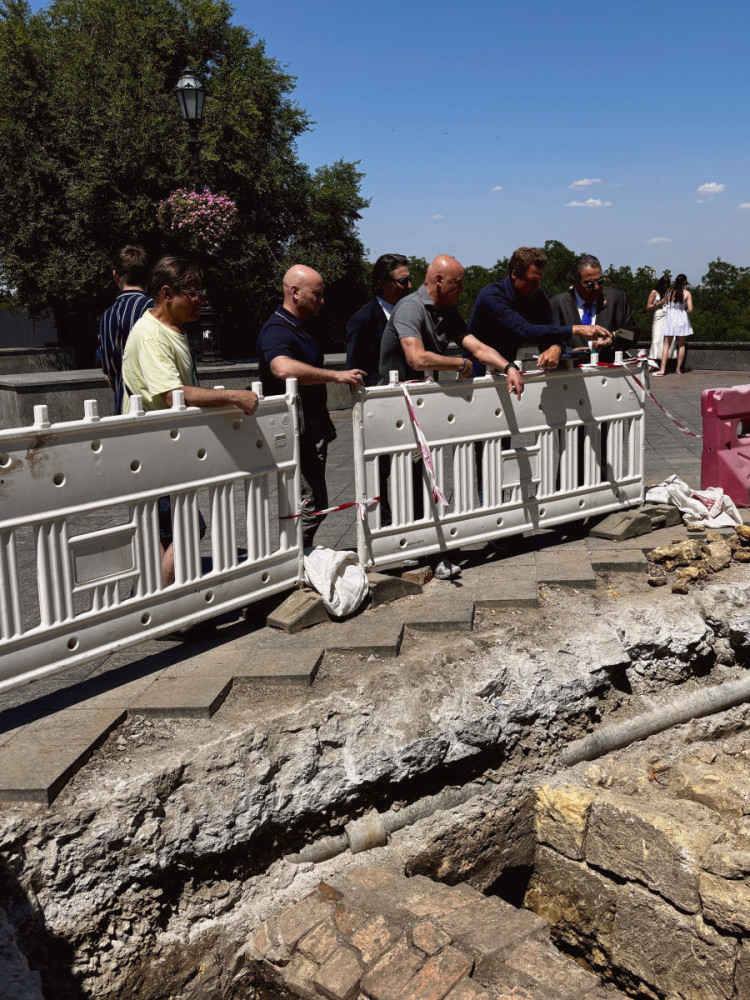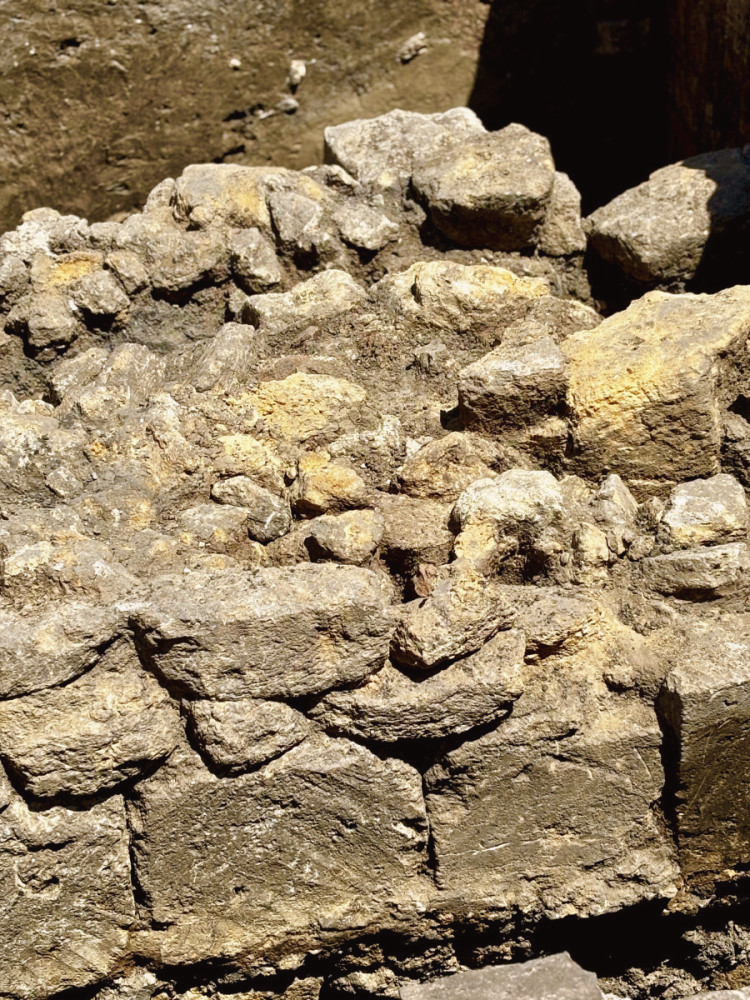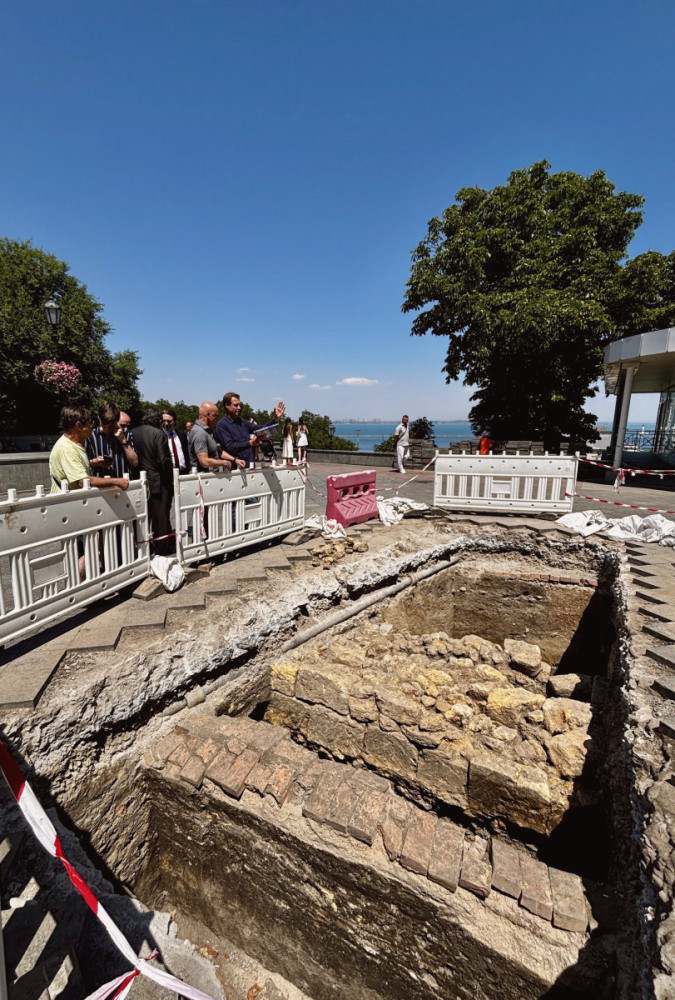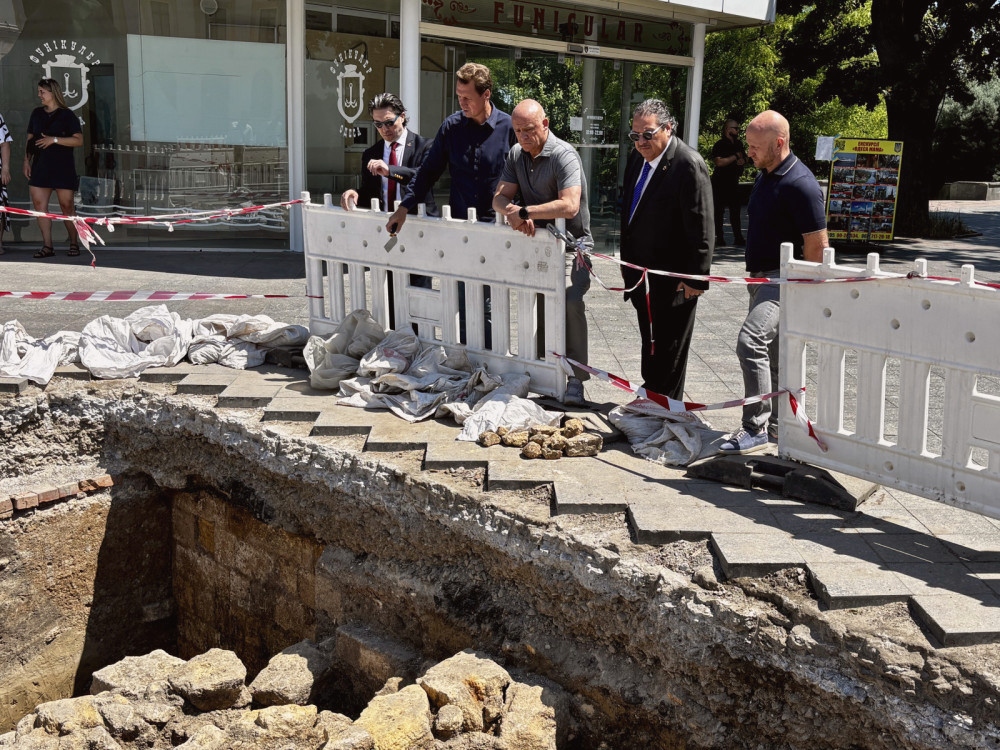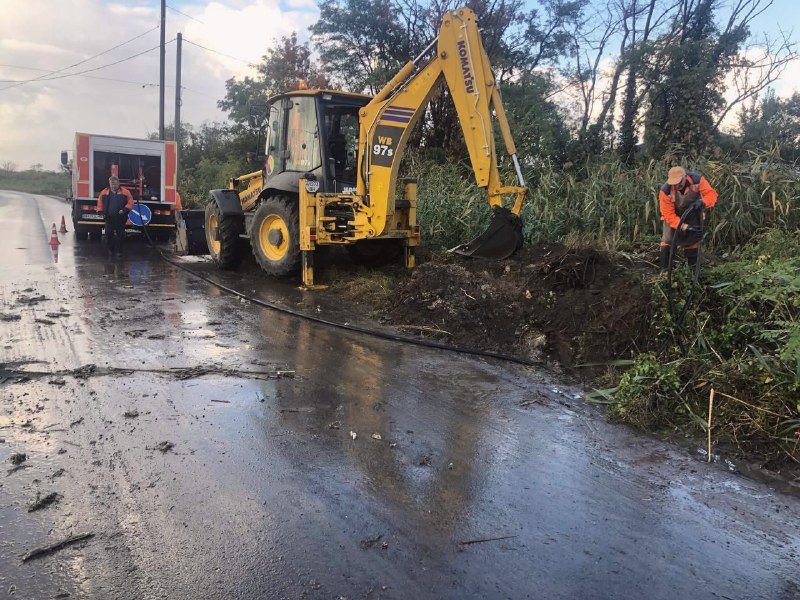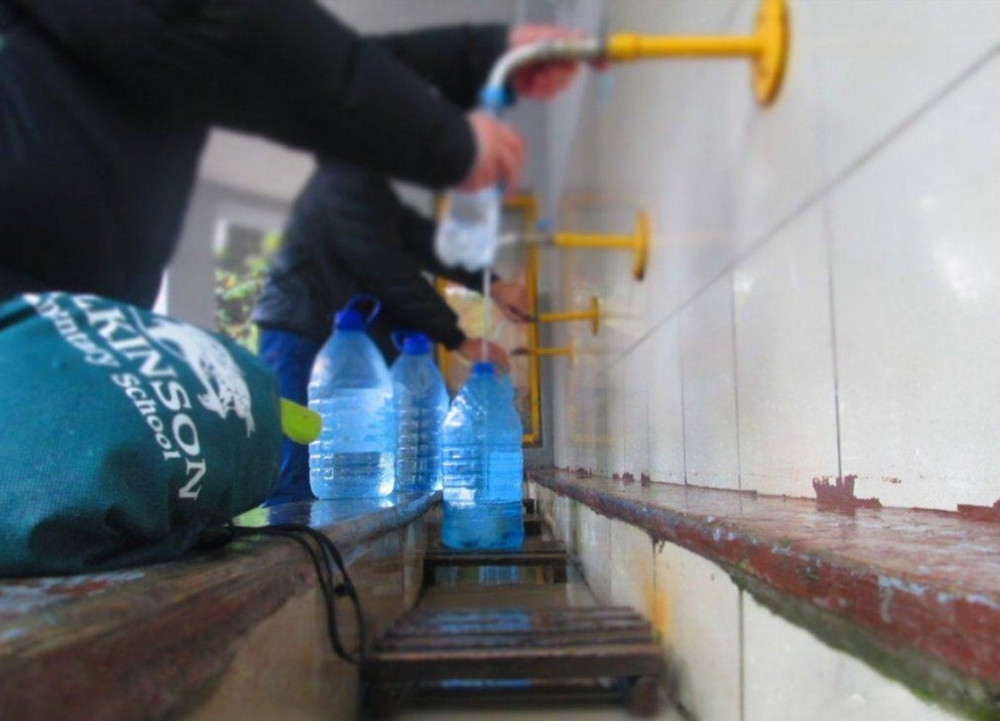Since June 25, archaeological excavations have been taking place on Primorsky Boulevard in Odessa.
These works are being carried out by students of the South Ukrainian National Pedagogical University named after K. D. Ushinsky in collaboration with specialists from the Institute of Archaeology of the National Academy of Sciences of Ukraine.
On July 14, the rector of the pedagogical university, Andriy Krasnozhon, presented the expedition results to Odessa's mayor, Gennady Trukhanov.
Among the most significant discoveries are archaeological materials of Genoese origin from the 14th century, found near the monument to Duke de Richelieu. They indicate that the monument is placed on a cultural layer of the Italian Ginestra, which was later transformed during the Ottoman Empire. Remains of fortifications from that time were discovered near the funicular.
As Andriy Krasnozhon reported, the area around the monument has already been conserved. The next step will be determining the boundaries of the ancient fortress through tracing — several test pits are planned for this.
The territory where Odessa is now located has deep multinational roots. Its natural landscape has always dictated port functions: the lands served military and logistical purposes for various states that did not develop urban infrastructure.
Actual urban development began only at the end of the 18th century — after the capture of the Ottoman fortress by commander Jose de Ribas.
Following the meeting, the mayor instructed his advisor, Attilio Malliani, to organize cooperation between the Odessa Pedagogical University and the University of Genoa, as well as to initiate research in Italian archives.



